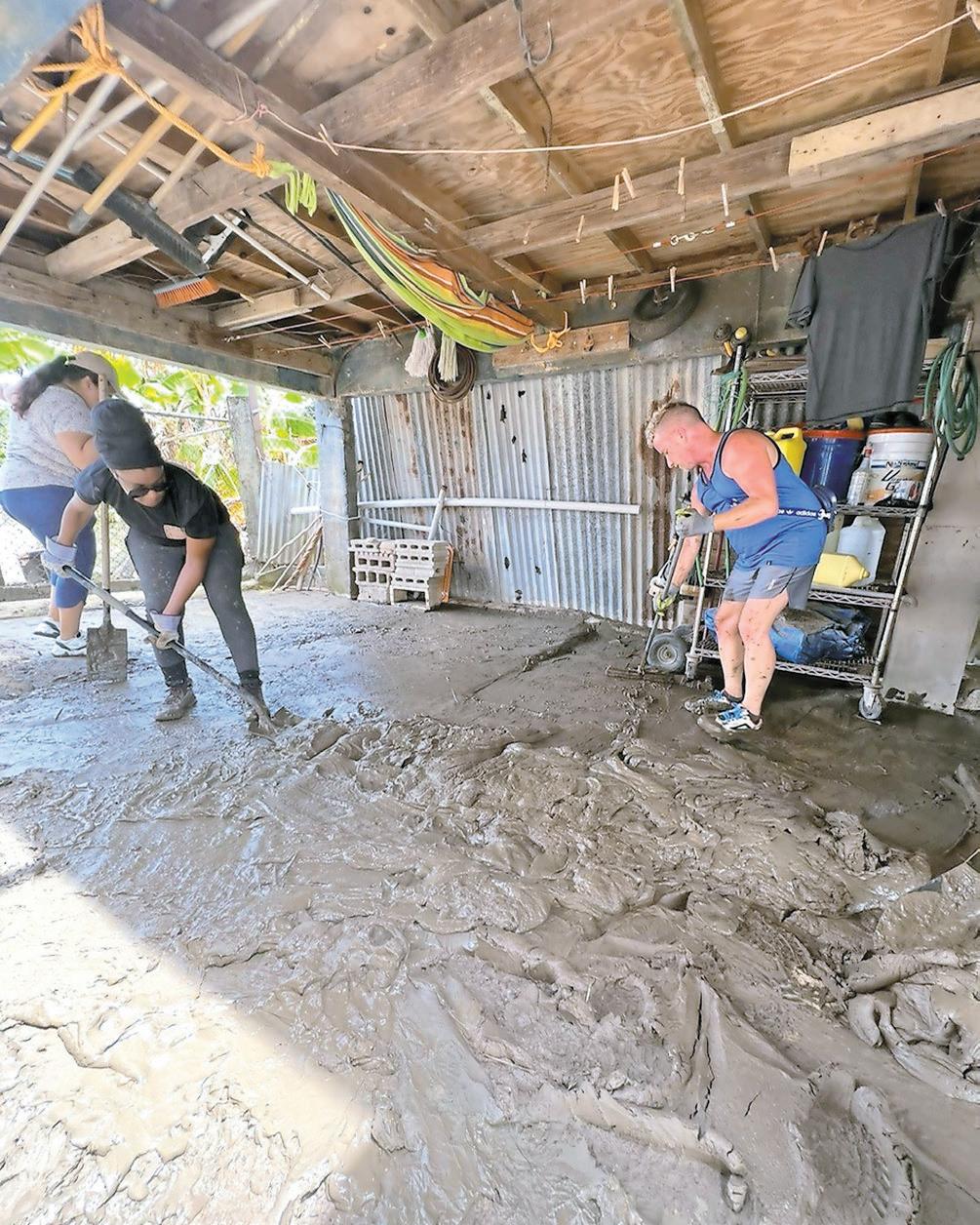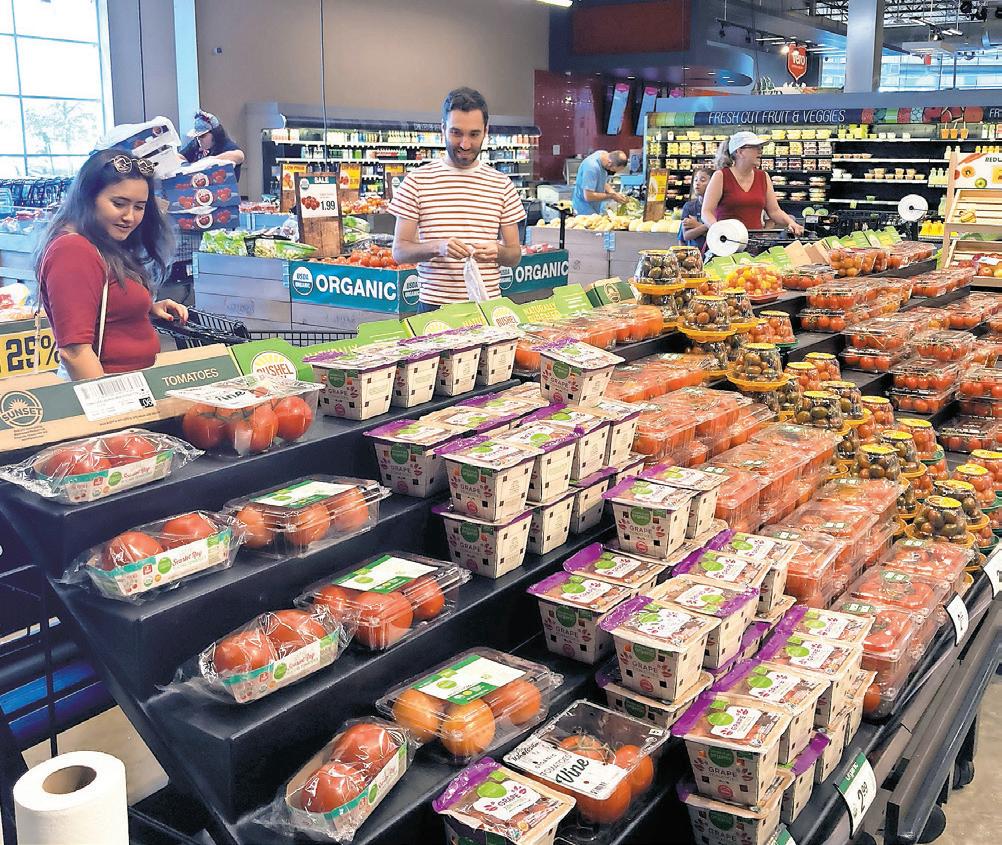
9 minute read
VolunTeers from prBTa Join relief efforTs
PRBTA volunteers join relief efforts after Hurricane Fiona
Volunteers personally finance support to victims
Advertisement
Zoe Landi Fontana, The Weekly Journal
Within days of Hurricane Fiona hitting the island on September 18, Keiko Yoshino of the Puerto Rico Blockchain Trade Association (PRBTA) and her team were on the ground helping with relief efforts in communities outside the metro area.
Once power was restored at home, Keiko Yoshino connected with Roberto Pérez, the Hype House, and local efforts to support the island’s recovery. With very little discussion, she formed the PRBTA Relief Fund, whose goal is to get what people need as quickly as possible. To achieve this quick response time, much of the financial lift has been provided by the volunteers themselves, with the hope that they will be able to raise enough later to compensate for the costs. For every dollar raised, the team spends two from their own pockets. For those that donate, all of the spending is published in a public folder. “We have every receipt and what it was spent on,” Keiko stated. The PRBTA Relief Fund is a 501(c)6.
In the few weeks since the PRBTA Relief Fund was founded, they have reached 3,500 families and raised over $100,000. Over 170 people have showed up to help over the last 10 days in six cities and 30 neighborhoods.
Shirley McPhaul, Director of CryptoCurious
The PRBTA Relief Effort has five teams that cover different roads and areas, clearing them of debris with chainsaws, shovels, and wheelbarrows. When they reach a home, covered and made inaccessible by debris, it doesn’t matter who is doing the rescuing. “We found people who have not seen anyone in days,” recounted Tim Blomquist, a member of the PRBTA Relief Fund and resident of San Juan. “It’s of the road, who have been cut off.
“Looking back on it is tough, but in the moment you feel good. There was one couple in the mountains of Cayey, they were both deaf, and it’s amazing…they couldn’t speak to us and we couldn’t speak to them, but it made a difference,” said Blomquist of the moment when their team reached the couple who had been trapped in their home.
amazing to see the amount of people who think a ‘thumbs-up’ is enough, while the backs of volunteers hurt,” said Blomquist.
Supplies and resources, including physical labor, have been provided by Keiko and the team members themselves.
“Looking through social media, seeing how everyone had moved on, but we were still in dire need – a lot of people died in the aftermath,” expressed Shirley McPhaul, a local member of the PRBTA Relief Fund and Director of CryptoCurious. “People in these barrios lost everything, some of them for the second time since Maria. I have never felt a loneliness so deep from seeing that everyone had moved on and we were forgotten.” As recovery continues, the needs of the community shift. In the beginning, the priority was to get food and clean water to people as quickly as possible. Now, as floodwaters recede, they need cleaning supplies, appliances, mattresses, and other supplies to live in sanitary conditions. One of the biggest challenges is reaching offthe-grid areas. “I’m shocked to see how little media attention is on this. They think that everything is okay because in San Juan things are back to normal,” said Blomquist. The PRBTA Relief Effort has a skeleton crew that can go out and clear paths and visit these homes. The challenge has been getting to those at the end
Dorado Cares
Dorado Cares is another relief effort born in the immediate aftermath of Hurricane Fiona. Not to be confused with Dorado Beach Cares, a different organization, Dorado Cares is an emergency response effort led by Richard Higgs. The Friday following Fiona’s landfall in Puerto Rico, Higgs filled his truck with supplies. By the next day, he had a truck of volunteers ready to help in neighboring Toa Baja. Since then, $200K in aid have been
In fact, delivered, and another $300K is scheduled to arrive in containers in the next few days. Resources and supplies include: furniture, As recovery continues, the needs of the community shift… as floodwaters recede, they need cleaning supplies, appliances, mattresses, and other supplies to live in sanitary conditions. mattresses, generators and other equipment. Higgs wants to create an emergency response organization that doesn’t require waiting for federal funds, but is well-equipped financially to respond to crises. “What can we do here in Puerto Rico to help the communities around us in a more long-term, sustained way?” Higgs asked. His answer is Dorado Cares. While they are currently focused on emergency community relief, there are other efforts that the organization will take up. Dorado Cares’ second goal is a long-term, sustained support program in the form of a warehouse stocked with all the resources that could be needed in case of other disastrous events. It wouldn’t require waiting for support – which often gets tied up in bureaucratic processes– at the municipal, federal level, or even grassroots level. Dorado Cares wants to become a resource to help in times of need while waiting for FEMA aid and community-level support and donations. Dorado Cares wants to create an inclusive Dorado community that extends far beyond the bubble of Act 20 and 22 recipients. They want to help with infrastructure in neighboring communities like Toa Baja, and participate in public works programs. “This is how you build goodwill and trust. You are there when they need you. We are an action based charity. Through action, perception will be altered,” Higgs stated.
Resilient U.S. consumers spend slightly more in August
Yet much of that increase reflected higher prices
Christopher Rugaber – The Associated Press
WASHINGTON (AP) — Consumers spent a bit more in August than the previous month, a sign the economy is holding up even as inflation lifts prices for food, rent, and other essentials.
Americans boosted their spending at stores and for services such as haircuts by 0.4% in August, after it fell 0.2% in July, the Commerce Department said Friday. Yet much of that increase reflected higher prices, with an inflation gauge closely monitored by the Federal Reserve rising 0.3% in August, the government’s report showed. The figures suggest that the economy is showing some resilience despite sharply rising interest rates, violent swings in the stock market, and high inflation.
Still, there were signs that rising prices are weighing on shoppers. Consumer spending, adjusted for inflation, is growing at a weaker pace. It increased at an annual rate of 2% in the AprilJune quarter. Yet July and August data indicate that spending growth is on track to slow to an annual rate of just 0.5% in the July-September quarter, economists said.
The economy is expected to grow in the third quarter, after shrinking in the first six months of this year. But many economists lowered their forecasts after the spending report and now expect growth will be just 1% or so at an annual rate.
Americans are also saving less in order to keep up with higher prices. The U.S. saving rate was just 3.5% in August, far below pre-pandemic levels of about 8%, Friday’s report said. There have been other signs of consumer weakness recently, with used car seller Carmax reporting sharply lower sales in the three months ending in August. The company attributed the decline to “affordability challenges” for consumers
Shoppers shop at a grocery store in Glenview, Ill., Monday, July 4, 2022. Consumers spent a bit more in August than the previous month, a sign the economy is holding up even as inflation lifts prices for food, rent, and other essentials. Americans boosted their spending at stores and for services such as haircuts by 0.4% in August, after it fell 0.2% in July, the Commerce Department said Friday Sept. 30. (AP Photo/Nam Y. Huh) amid high inflation and rising interest rates. Compared with a year ago, prices jumped 6.2%, down from a 6.4% annual gain in July but not far from June’s four-decade high of 7%. The figure is lower than the more widely-known consumer price index, released earlier this month, which reported an 8.3% price gain in August from a year earlier.
In fact, The two indexes differ for several reasons. For example, the consumer price index puts The figures much greater weight on rents suggest that the and housing costs, which have economy is showing been rising steadily, than the some resilience measure released Friday, known despite sharply as the price index for personal rising interest rates, consumption expenditures. violent swings in the Excluding the volatile food and stock market, and energy categories, core prices high inflation. rose 0.6%, much faster than July’s flat reading. They increased 4.9% from a year earlier, up from July’s figure of 4.6%. Those figures were higher than expected, and may make the Federal Reserve more likely to lift its benchmark interest rate by another hefty 0.75 percentage point at its next meeting in November. If so, that would be the fourth such hike in a row. The inflation figures in Friday’s report echoed those released earlier this month, with core

prices rising more quickly than headline inflation. Falling gas prices have reduced overall inflation, while stubbornly high costs for housing, cars, and services such as health care and hair cuts have pushed core prices higher. Adjusted for inflation, consumer spending ticked up 0.1% last month, after falling slightly in July.
Friday’s report also showed that personal income rose 0.3% in August for the second month in a row. Adjusted for price increases, disposable income -- what is leftover after taxes -- ticked up 0.1%, after a hefty 0.5% gain in July. But over a longer time frame, incomes are trailing inflation. In the April-June quarter, inflationadjusted disposable income fell 1.5% at an annual rate.
The Federal Reserve is seeking to wrestle inflation under control with its most rapid series of interest rate hikes in four decades. It has pushed its benchmark short-term rate to a range of 3% to 3.25%, the highest since early 2008, up from nearly zero in March. Fed Chair Jerome Powell and other officials have repeatedly underscored the Fed’s determination to bring prices down, even if their rate hikes result in layoffs and a higher unemployment rate.
The Fed intends its interest rate increases to slow borrowing and spending, which should in turn reduce inflation pressures in the economy. Inflation has spiked globally, contributing to economic and financial turmoil in the United Kingdom, Europe, and a slew of developing countries, from Turkey to Argentina. Also Friday, the 19 countries that use the euro currency reported that inflation spiked 10% from a year earlier, as prices for natural gas and electricity soared. European countries are struggling with an energy crunch in the aftermath of Russia’s invasion of Ukraine, as Russia has reduced its supplies of natural gas to the European Union.



